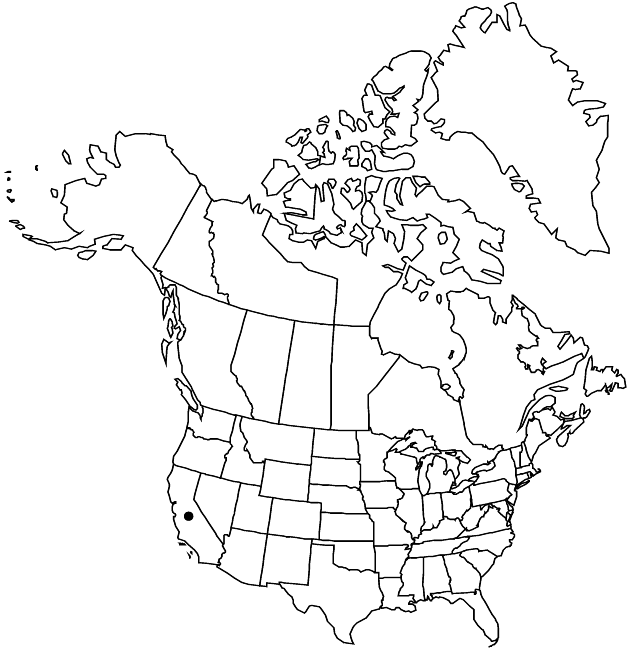Calycadenia micrantha
Sida 21: 261, figs. 1, 2B. 2004.
Plants 10–50 cm (relatively slender); self-compatible. Stems (often purplish, especially distally, slender, usually less than 3 mm diam. at bases) branched (branches often relatively many, usually from near midstems, arcuate to ascending), glabrous. Leaves mostly alternate, 2–5 cm (proximal), hispidulous and ± long-hairy (especially margins and adaxial faces). Heads borne singly or in ± spiciform arrays (1–3 per node, ± sessile). Peduncular bracts lance-oblong to linear, 2–4 mm (nearly terete to strongly flattened, glabrous or hispid overall, sometimes pectinate-fimbriate), apices ± rounded, tack-glands usually 1 (terminal). Phyllaries 4–5 mm, abaxial faces glabrous or ± hispid distally or sparsely bristly, shaggy long-hairy on margins distally, tack glands 0(–1) (terminal). Paleae 5–6 mm. Ray florets 1–3(–6); corollas bright yellow, tubes 1–1.5 mm, laminae 2–2.5(–3) mm (central lobes smaller than laterals, oblong to narrowly triangular, symmetric, widest at bases, laterals asymmetric, sinuses 1/4 laminae). Disc florets 1–3; corollas yellowish, 3–4 mm. Ray cypselae ca. 3 mm, rough-wrinkled, glabrous. Disc cypselae ca. 3 mm (seldom formed, terete and tapered toward bases, smooth to ± ridged, glabrous); pappi 0. 2n = 14.
Phenology: Flowering usually Aug–fall.
Habitat: Dry, open, rocky ridges, hillsides and talus
Elevation: 300–1500 m
Distribution

Calif.
Discussion
Calycadenia micrantha is most closely related to variants of C. truncata and is found in the North Coast Range from Trinity County to Lake and Colusa counties. Calycadenia truncata subsp. microcephala H. M. Hall ex D. D. Keck may be a synonym of C. micrantha. D. D. Keck (1960b) reported this to be on the east slope of the Santa Lucia Mountains of Monterey County.
Selected References
None.